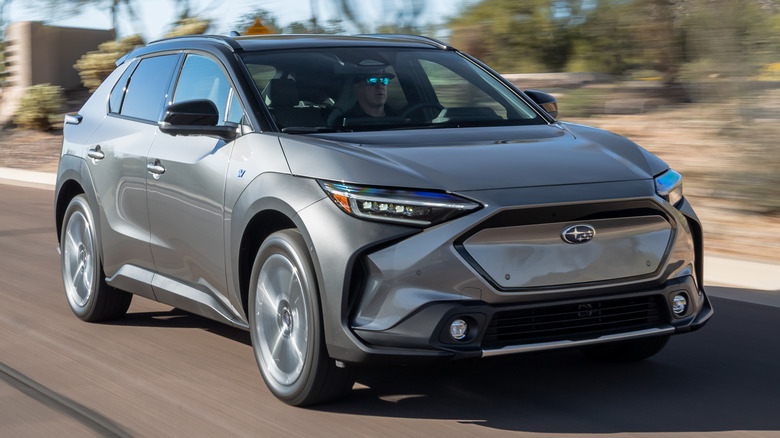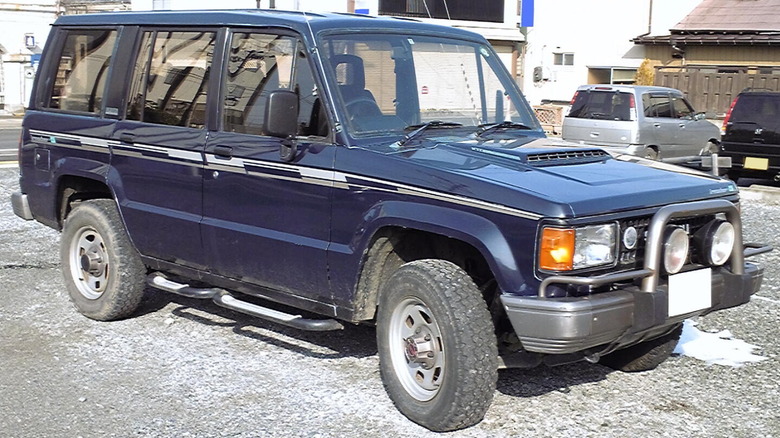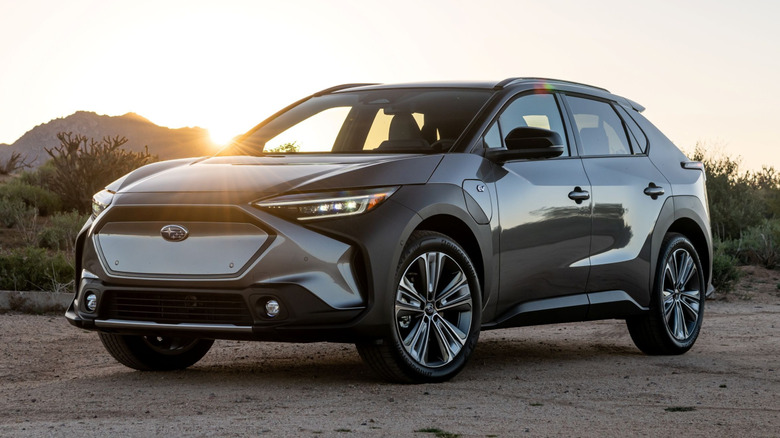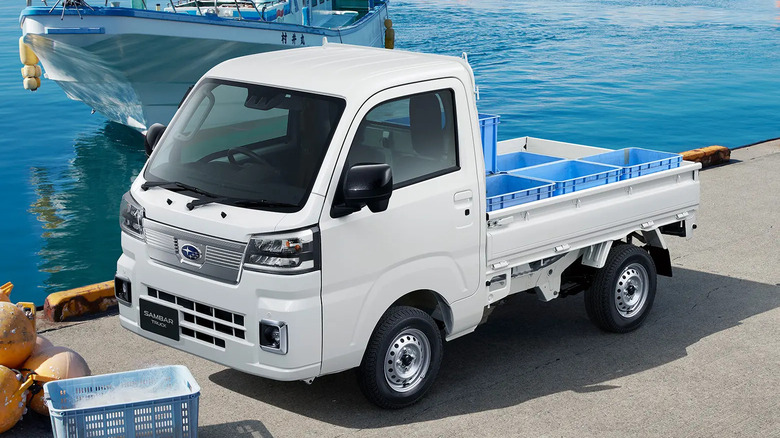These 3 Subaru Models Actually Came From Another Carmaker
Try as they might, no carmaker can predict the future. Sometimes, a change in buyer tastes can catch out even the largest automotive giants, although many have the financial and human resources to rush out a hastily developed model if they need to. For smaller carmakers like Subaru, that isn't an option, and so they have to rely on rebadging models from other manufacturers to temporarily fill gaps in their range.
Producing smaller volume models entirely in-house also isn't a financially viable option, which is why Subaru has collaborated with larger automakers like Toyota on certain cars. Collaboration is a process that arguably works well for everyone — both manufacturers benefit from a new model in their range, and enthusiasts benefit because these small volume models are often sports or performance cars.
Whether they're small volume models or models launched to cater to rapidly emerging new trends, these three Subarus don't boast the same in-house heritage as the rest of the brand's back catalog.
Subaru Bighorn
When SUVs started to become more popular among buyers in the '90s, several automakers were caught off-guard. They didn't have SUVs in their lineups and didn't have the time or resources to develop one, so they ended up borrowing an existing model as a stopgap measure and rebadging it. One of the most commonly rebadged SUVs of the era was the Isuzu Trooper, which was sold in certain markets as the Subaru Bighorn. Subaru also unveiled a special edition version of the SUV featuring handling tweaks by Lotus, although, make no mistake, this was still no sports SUV.
Subaru was far from alone in borrowing the Trooper's design. Honda also licensed the car and badged it as the Honda Horizon and Acura SLX, while in other markets, it was sold as the Vauxhall or Opel Monterey or, in Australia, as the Holden Jackaroo. The Trooper's popularity as a rebadged model would eventually wane as other automakers caught up and launched their own SUVs, with Subaru launching the Forester for the 1998 model year.
Subaru Solterra
While Subaru has committed to building its own range of EVs in the future, for now, it only sells one electric model. That model is the Solterra, and it's essentially a rebadged version of the Toyota bZ4X. It's built by Toyota at the automaker's plant in Japan and is one of several current and future models that's shared by the two manufacturers. The other, more well-known current Subaru-Toyota collaboration is the BRZ/GR86, with both Toyota and Subaru badged versions of the small sports car built at Subaru's Gunma plant in Japan.
The two companies are also reportedly collaborating on future EV models, but for now, the Solterra remains the sole product of the joint EV project. The Solterra starts from just under $40,000 for 2025, although buyers looking to purchase one might want to wait until the heavily revised 2026 Solterra arrives in dealerships in fall 2025. It boasts longer range, faster charging times, and improved infotainment compared to the outgoing model, but there's no word yet on how much it might cost.
Subaru Sambar
Kei trucks have become a cult trend across the U.S. in recent years, perhaps because they're the polar opposite of most American trucks. In the Kei truck world, smaller is better, and thanks to the Japanese rules around Kei-class vehicles, they also have to have engines smaller than 660cc. They're designed to be as compact, efficient, and practical as possible, and one of the best-known Kei trucks is the Subaru Sambar. For decades, Subaru produced its own Kei vehicles in-house, including the Sambar. However, since 2012, the brand's tiny truck has been a badged-engineered clone of the Daihatsu Hijet.
That won't matter much for American enthusiasts who love the Sambar, since it'll be a while since they can import a badge-engineered Sambar anyway. The trucks can only be imported under the 25-year rule, and the oldest Daihatsu-built example is over a decade away from being old enough to qualify. Plus, in some states, buying a Kei truck might be impossible by the time that the badge-engineered Sambar hits a quarter-century old. Colorado has already tried to ban Kei-class vehicles, and despite reversing course, has been reportedly refusing to certify new Kei car imports.
Other states, such as Maine, have also had official bans in place on Kei cars for road use, but some allow them to be used off-road. Either way, it seems that American Kei enthusiasts have more pressing matters to be concerned about than whether their Sambar is actually a Daihatsu in disguise.



